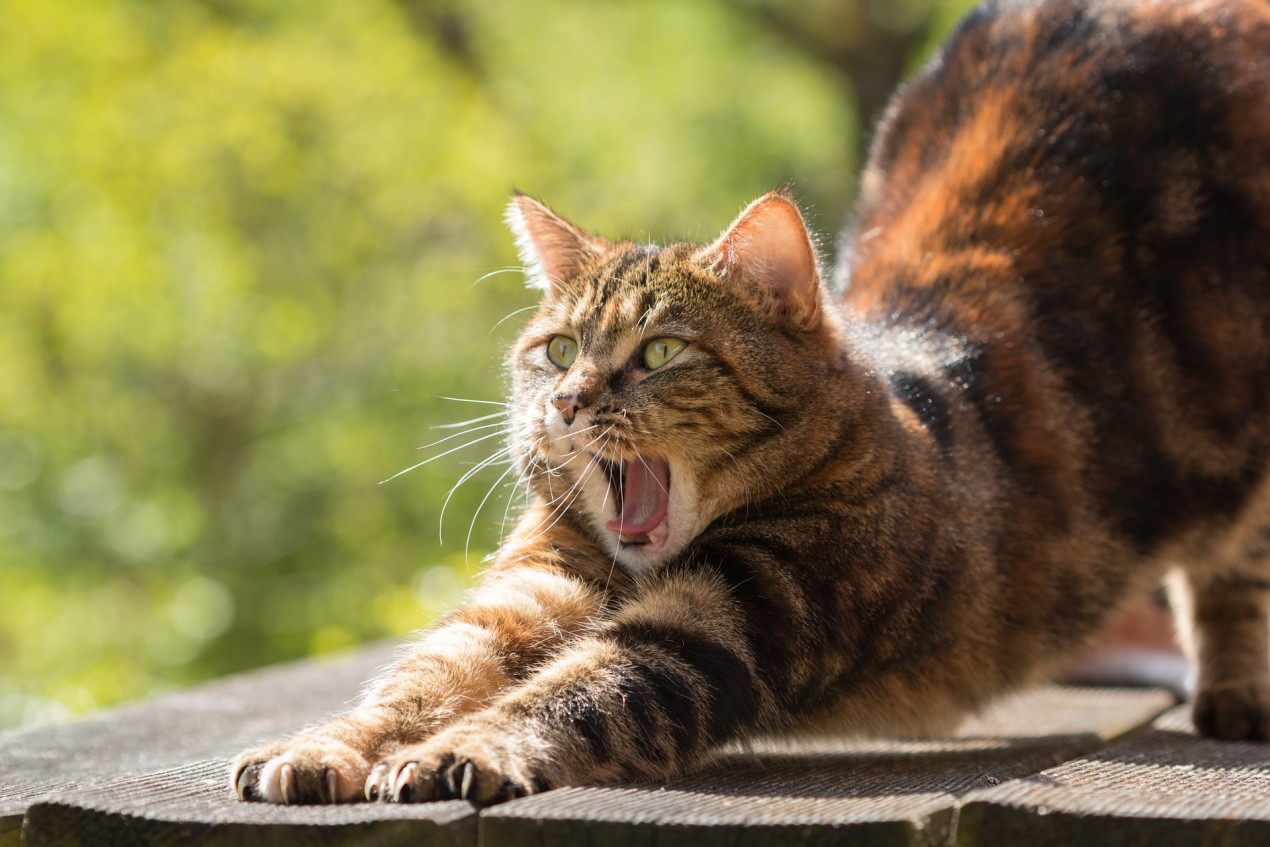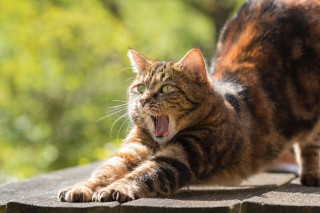We're here to help

Why should I check for cat dental problems?
Often people are amazed at the condition of their cat’s teeth when they visit their vet because their cat has gone off its food. This is because when cats are eating we assume that all is well and we don’t always take the time to check cat dental health.
The majority of cats will suffer dental disease at some point in their life. As with many things, if caught early, treatment for cat teeth problems can be simple and effective.

How should I do a cat dental check?
You should take great care when checking your cat’s teeth. Never stick your finger inside your pets’ mouth if you are not clear what you are doing. Don’t assume that because they like you they won’t accidentally close their teeth on your fingers! It is important that your cat is as relaxed as possible during this examination as they are much more likely to be cooperative and reduce the chance of accidental nips.
It is possible to examine your cat’s mouth well enough to identify possible problems without having them “open wide”.
If you regularly brush your cat’s teeth then you are already onto a winner as you can have a look while doing this daily task.
If you don’t brush your cat’s teeth (it’s worth considering starting) then there are two ways of getting a good look at their teeth and gums:
- While they are sat quietly, gently lift the flaps of their gums and have a quiet look at the teeth you can see there – pay attention to the colour of the gums, any developing ‘lumps’, signs of broken/chipped teeth and areas that seem/look painful. Once you’ve had a look at one side then look at the other. Although you won’t be able to see the whole mouth you will get a good overall picture. Sometimes you can do this easier if you have a cat that enjoys pushing against you when you stroke them then you can try cupping your hands against their face and as they push against you, it can make them ‘smile’.
- If and when you offer them some form of chew then try and have a look towards the back of the mouth while they are chomping on the chews (and not your fingers). As with the other teeth pay attention to the gum colour, signs of broken or chipped teeth and if he seems to favour one side of his mouth over the other.
It is worth starting to do these cat dental checks for the first time after you’ve just had a vet check as there may be certain things specific to your pet that your vet already knows about. If you know they’ve been checked and are okay you can use this as a ‘baseline’.
Explain to your vet that you are keen to start doing your own basic cat dental checks so you can keep an eye on him between visits to the vet. You may well find they will show you any unusual things with your pet so you know what is already there. Be careful to explain that you are not trying to replace your vet by doing things at home but because you want to know the minute any cat teeth problems arise so you can get them treated.
What am I looking for when doing a cat dental health check?
- Redness of Gums – cats are particularly prone to a disease known as gingivitis (inflammation of the gums). It is easy to spot as the main sign of this disease is redness of the gums – often along the rim of the gum where it connects to the teeth. Gingivitis on its own isn’t the most serious disease but it can lead to more serious conditions if left to progress.
- Gum Recession – either following on from gingivitis or on its own, it is not uncommon to get recession of the gums (where the gum moves down away from the crown of the teeth), this exposes the roots of teeth and can cause a number of issues – loose teeth, neck lesions, increased risk of fracturing to name but a few. If caught at this stage it can usually be successfully managed.
- Bleeding Gums – This is often the next stage in the development of gum disease following gingivitis and/or gum recession and can be a sign that things are not good. Left untreated at this stage then severe dental disease is almost certain. This will both be painful for your cat and costly for yourselves.
- Plaque and Tartare – this can hide an awful lot of problems, if the teeth are caked in plaque and tartare then it is possible that there is significant tooth decay occurring underneath.
- Broken or Wobbly Teeth – We all know how quickly we go to the dentist if we break a tooth or damage one and animal teeth are exactly the same. It is amazing what they will tolerate and for how long they will continue to eat but this shouldn’t be taken as evidence that they are ok.
- Swelling of the Gums Around Some Teeth – this can indicate an underlying abscess, these are often painful and can lead to loss of teeth or even spread to other parts of the body.
- Lumps on the Gums – there are a variety of soft tissue lumps that can grow in the mouth, some of these are fine, some are not, so always best to get them checked.
These checks are not meant to replace going to the vet but to help you identify what is normal for your pet and when things are ‘changing’ and may require more attention.

